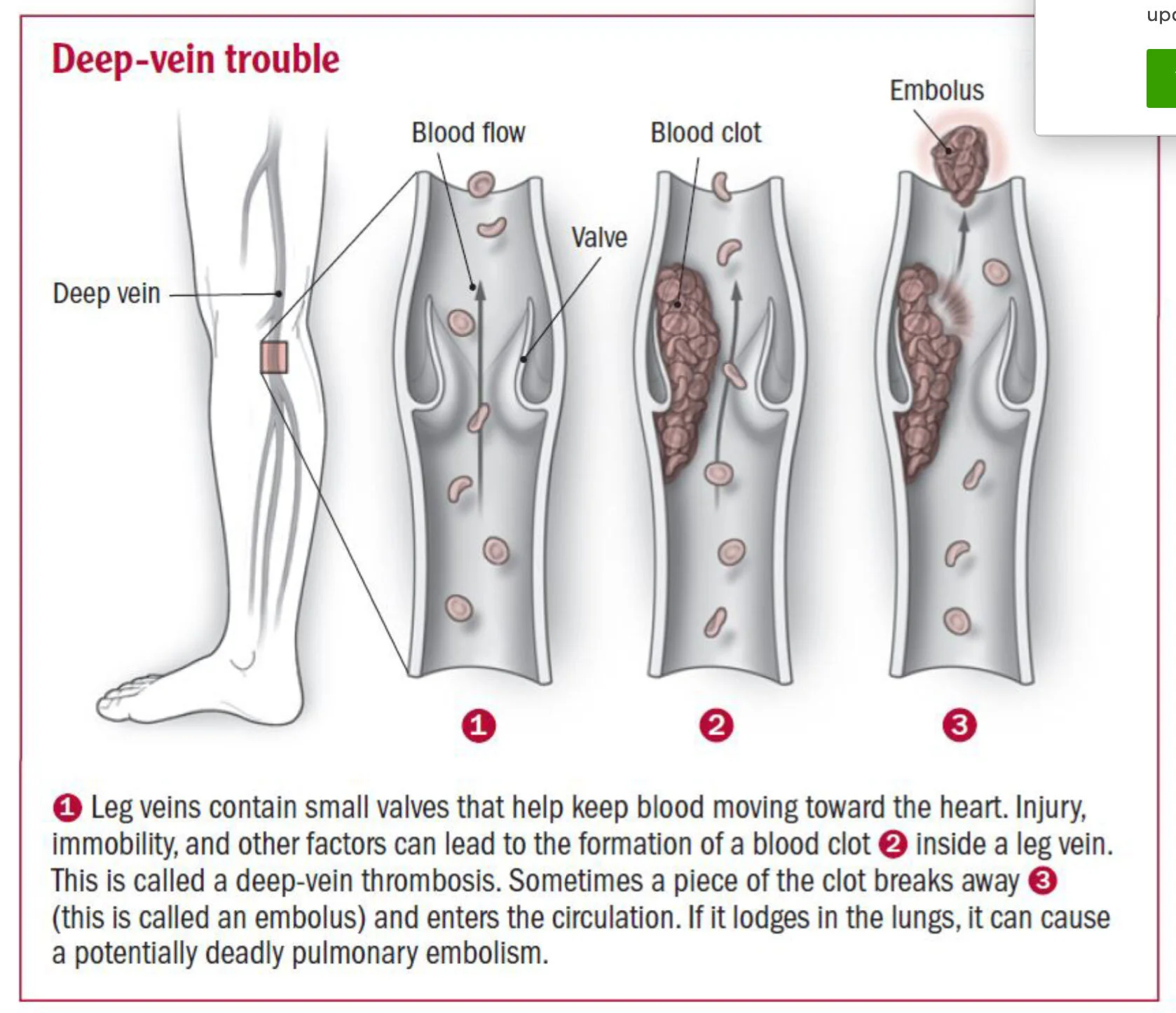Signs of clot. Blood Clots: Understanding Risks, Recognizing Symptoms, and Taking Action
What are the common signs of blood clots in different parts of the body. How can you identify potentially life-threatening clots in the legs, lungs, heart, and brain. What steps should you take if you suspect a blood clot.
The Vital Role of Blood Clots in Our Bodies
Blood clots play a crucial role in our body’s healing process. When we experience a minor injury, such as a paper cut or a shaving nick, blood clots quickly form to stop the bleeding. Under normal circumstances, these clots dissolve once they’ve served their purpose. However, complications can arise when blood clots don’t break down as they should.
Persistent blood clots can pose serious health risks and lead to severe medical conditions. They can form in blood vessels throughout the body, with the legs being particularly susceptible, especially during periods of prolonged immobility.
Types of Blood Clots
- Arterial clots: These form in arteries, which carry oxygen-rich blood from the heart to the body’s cells.
- Venous clots: These develop in veins, which return blood to the heart.
Arterial clots can quickly lead to life-threatening emergencies by cutting off oxygen supply to vital organs like the heart, lungs, or brain. Venous clots typically develop more gradually but can still cause significant health problems.
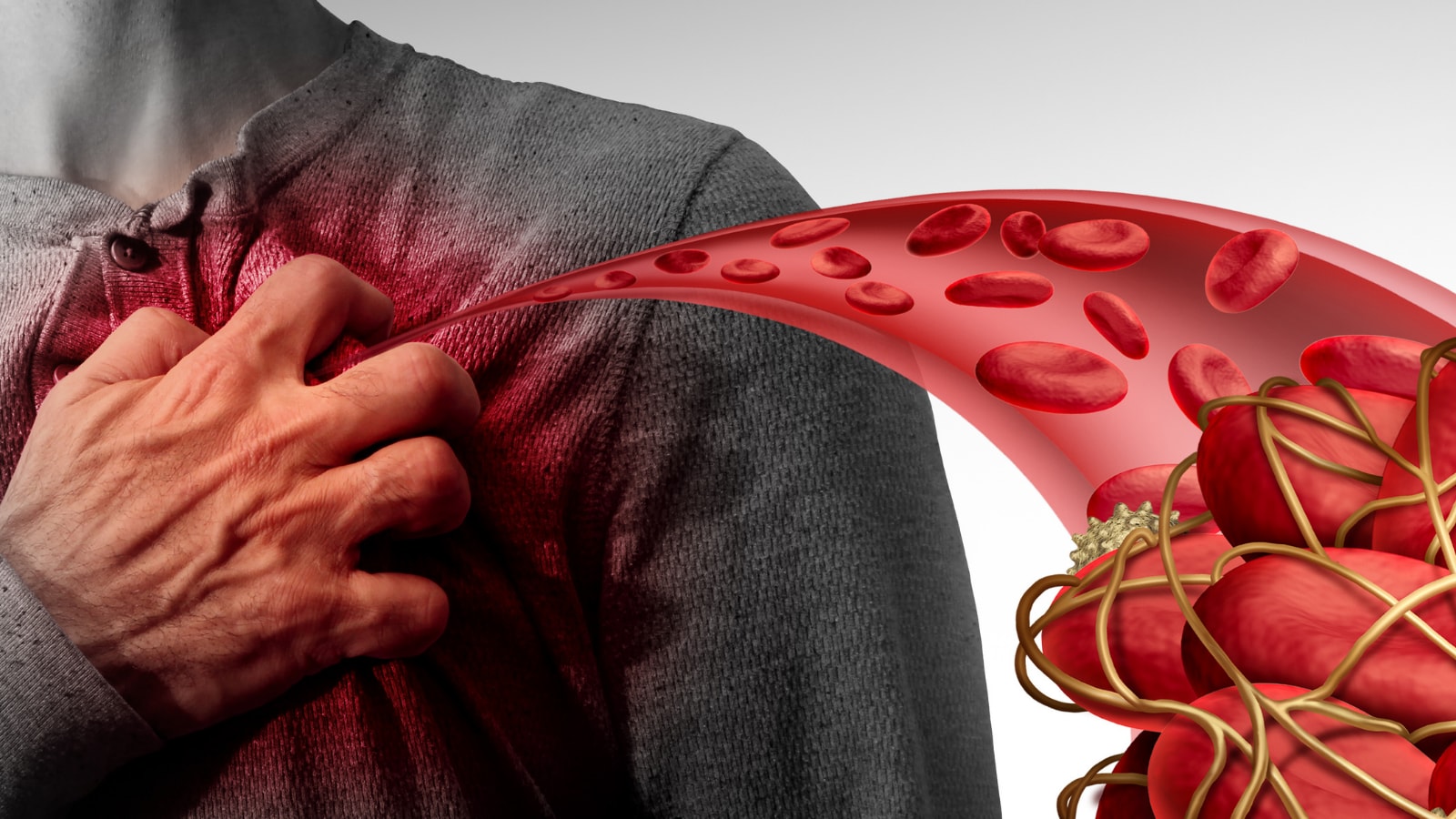
Recognizing Deep Vein Thrombosis (DVT)
Deep Vein Thrombosis (DVT) occurs when a blood clot forms in one of the deep veins of an arm or leg. This condition is particularly dangerous because the clot can potentially travel to the heart or lungs.
Risk Factors for DVT
- Extended periods of immobility (e.g., after surgery or during long flights)
- Certain medical conditions
- Obesity
- Pregnancy
- Smoking
Common Symptoms of DVT
- Swelling in the affected limb or entire arm/leg
- Skin discoloration (redness or bluish tint)
- Pain or soreness, ranging from a dull ache to intense discomfort
- Warm skin in the affected area
- Trouble breathing (if the clot has moved to the lungs)
- Lower leg cramps
- Pitting edema (when pressure on swollen skin leaves a temporary dimple)
- Swollen, painful veins that are sensitive to touch
Is prompt medical attention necessary for suspected DVT? Absolutely. If you experience any of these symptoms, especially if they come on suddenly or worsen over time, seek immediate medical help. Early intervention can prevent potentially life-threatening complications.
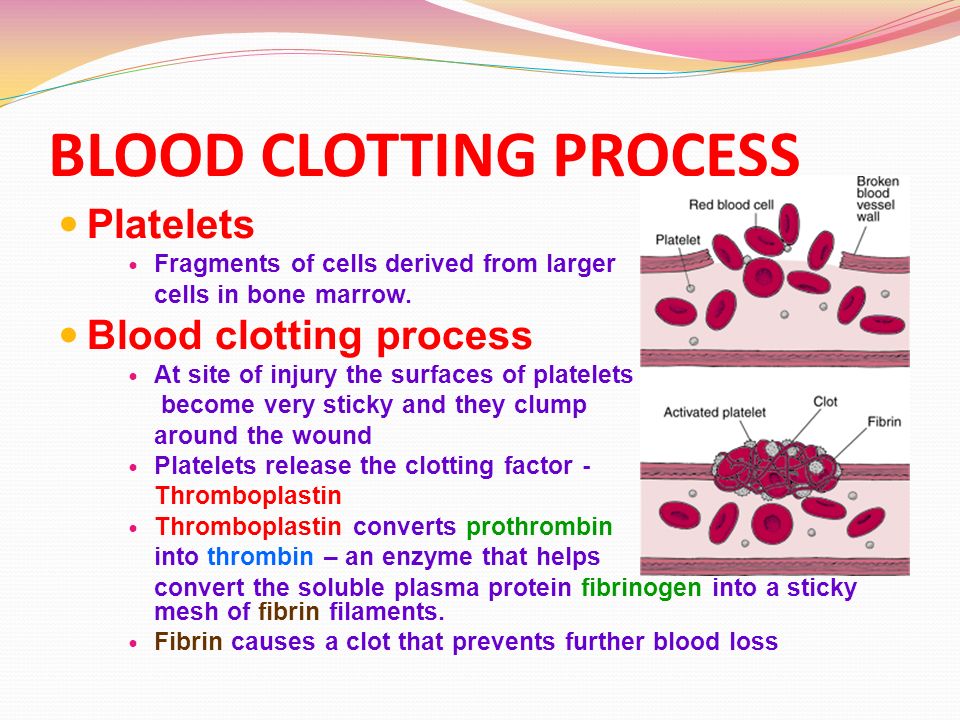
Pulmonary Embolism: A Life-Threatening Complication
A pulmonary embolism occurs when a blood clot, typically originating in a deep vein of an arm or leg, breaks off and travels to the lung. This condition is extremely dangerous and requires immediate medical attention.
Warning Signs of Pulmonary Embolism
- Sudden shortness of breath or difficulty breathing
- Chest pain
- Coughing, possibly with blood
- Rapid heartbeat
- Dizziness or lightheadedness
- Excessive sweating
Can pulmonary embolisms be fatal? Yes, they can be life-threatening if not treated promptly. If you experience any of these symptoms, especially if they come on suddenly, call emergency services immediately.
Blood Clots and Heart Health
Blood clots that form in or around the heart can lead to a heart attack, a medical emergency that requires immediate attention. Understanding the symptoms can help you recognize when to seek help.
Heart Attack Symptoms
- Severe pain in the chest and arm
- Profuse sweating
- Difficulty breathing
- Nausea or vomiting
- Lightheadedness or dizziness
Are all heart attacks caused by blood clots? While blood clots are a common cause of heart attacks, other factors such as coronary artery spasms or severe arrhythmias can also lead to heart attacks. Regardless of the cause, any suspected heart attack symptoms warrant immediate medical attention.
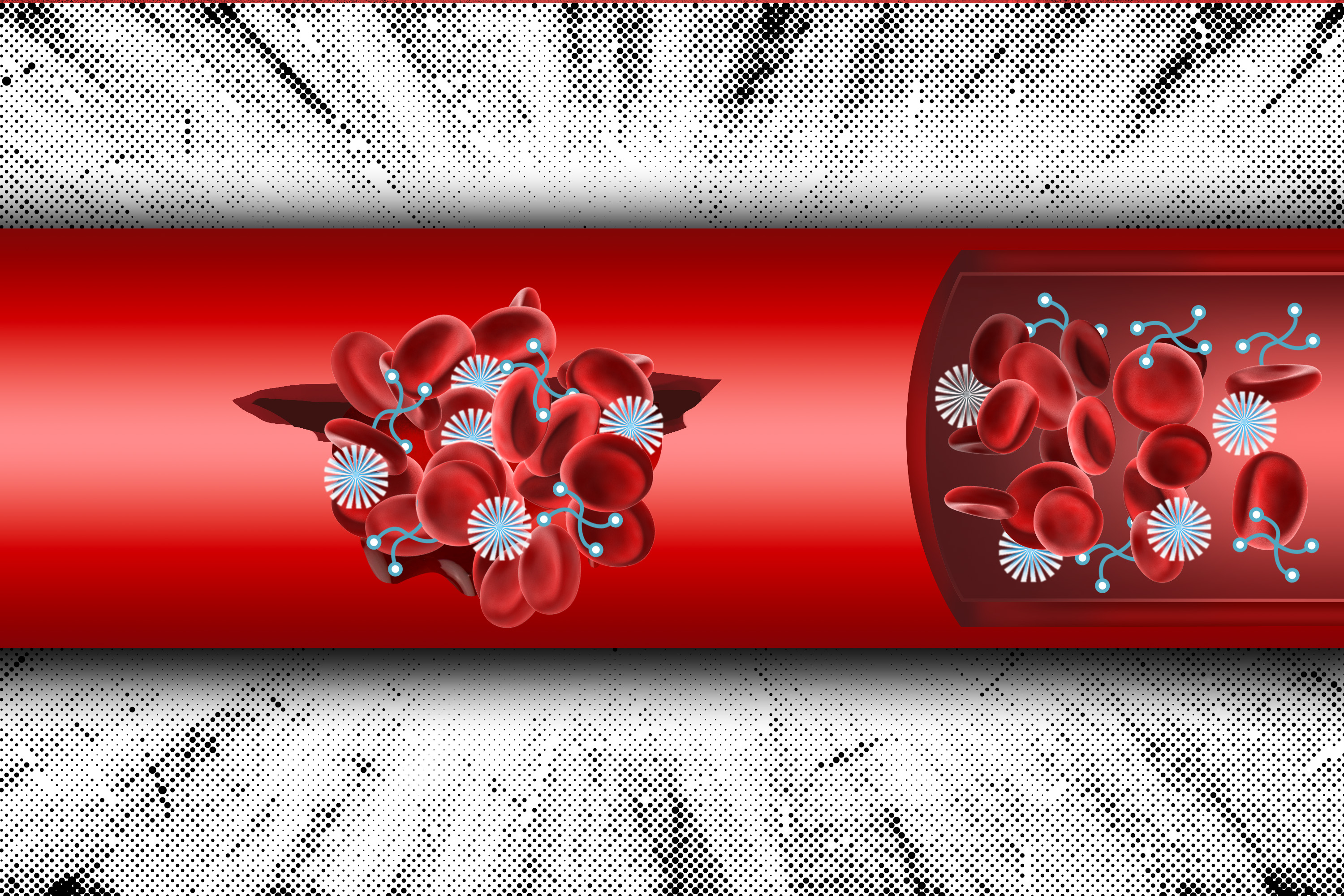
Blood Clots in the Brain: Stroke Risk and Symptoms
Blood clots in the brain can cause strokes, which occur when blood flow to part of the brain is blocked. Strokes can result from clots that form in the brain or those that travel there from other parts of the body.
Causes of Brain Blood Clots
- Fatty deposits in blood vessel walls
- Head injuries leading to concussions
- Clots that originate elsewhere in the body and travel to the brain
Stroke Symptoms
- Sudden vision problems or changes in speech
- Seizures
- General weakness or paralysis on one side of the body
- Severe headache
- Confusion or difficulty understanding speech
How quickly should you act if you suspect a stroke? Time is critical when it comes to stroke. The faster a person receives treatment, the better their chances of recovery. Remember the acronym FAST: Face drooping, Arm weakness, Speech difficulty, Time to call emergency services.
Abdominal Blood Clots: A Hidden Danger
Blood clots can also form in the veins that drain blood from your intestines, a condition known as mesenteric venous thrombosis. This can be caused by various factors, including certain medical conditions and medications.

Risk Factors for Abdominal Blood Clots
- Diverticulitis
- Liver disease
- Use of birth control pills
- Recent abdominal surgery
- Certain blood disorders
Symptoms of Abdominal Blood Clots
- Severe abdominal pain, often worse after eating
- Nausea or vomiting
- Diarrhea
- Bloody stools
- Abdominal bloating
- Fever
Can abdominal blood clots be mistaken for other conditions? Yes, the symptoms of abdominal blood clots can mimic other gastrointestinal problems, making diagnosis challenging. If you experience persistent or severe abdominal pain, especially if accompanied by other symptoms, seek medical attention promptly.
Kidney Complications from Blood Clots
Blood clots in the kidneys can interfere with their ability to filter waste from the body, potentially leading to serious complications such as high blood pressure or kidney failure.
Signs of Kidney Blood Clots
- Pain in the side of the abdomen, legs, or thighs
- Blood in the urine
- Fever
- Nausea or vomiting
- Elevated blood pressure
- Sudden severe leg swelling
- Difficulty breathing
How do kidney blood clots affect overall health? Kidney blood clots can have far-reaching effects on the body. By impairing kidney function, they can lead to a buildup of waste products in the blood, cause fluid retention, and contribute to high blood pressure. In severe cases, they may even lead to kidney failure, necessitating dialysis or transplantation.
:max_bytes(150000):strip_icc()/why-are-there-blood-clots-in-my-period-2721935_final-b4d12209f16a4e558194b7d49383aafc.png)
Prevention and Management of Blood Clots
While blood clots can be dangerous, there are steps you can take to reduce your risk and manage existing clots effectively.
Preventive Measures
- Stay active and avoid long periods of immobility
- Maintain a healthy weight
- Stay hydrated
- Quit smoking
- Manage underlying health conditions
- Wear compression stockings if recommended by your doctor
- Take blood thinners as prescribed
Management Strategies
- Follow your doctor’s treatment plan carefully
- Attend all follow-up appointments
- Report any new or worsening symptoms promptly
- Take medications as prescribed
- Make lifestyle changes to reduce risk factors
Is it possible to completely prevent blood clots? While it’s not always possible to prevent all blood clots, especially in high-risk individuals, these measures can significantly reduce your risk. Always consult with your healthcare provider for personalized advice on blood clot prevention and management.
When to Seek Medical Help
Recognizing the signs of a blood clot and knowing when to seek medical attention can be life-saving. While symptoms can vary depending on the location of the clot, there are some general warning signs to be aware of.
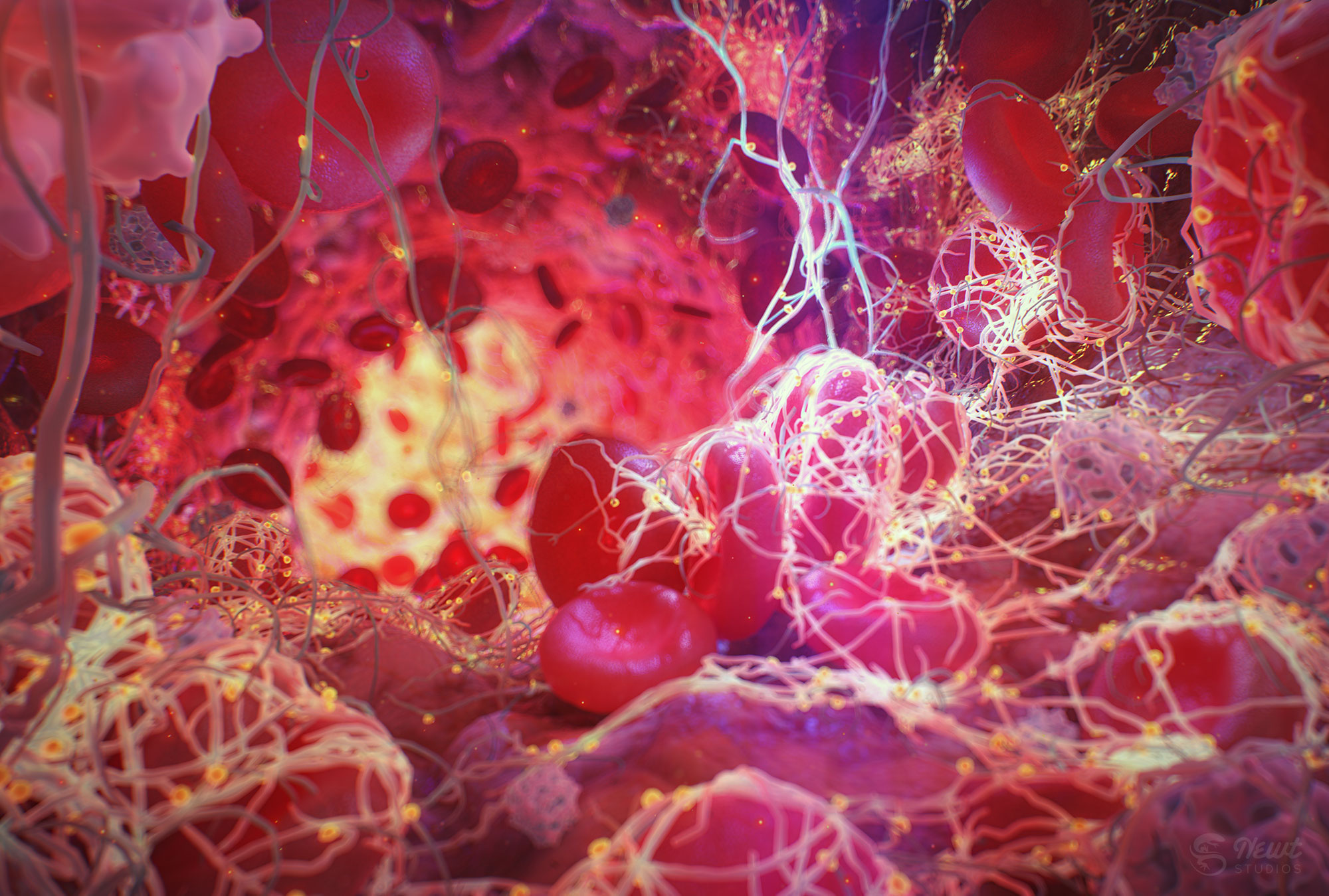
Red Flags That Warrant Immediate Medical Attention
- Sudden, severe pain or swelling in a limb
- Chest pain or pressure
- Difficulty breathing or shortness of breath
- Sudden severe headache
- Confusion or difficulty speaking
- Vision changes
- Severe abdominal pain
- Coughing up blood
Should you go to the emergency room or call your doctor for suspected blood clots? If you experience severe symptoms or those that come on suddenly, it’s best to seek emergency medical care. For less severe symptoms or if you’re unsure, contact your healthcare provider immediately for guidance. Remember, when it comes to blood clots, it’s always better to err on the side of caution.
Understanding the risks, recognizing the symptoms, and taking prompt action are crucial steps in managing the potential dangers of blood clots. By staying informed and vigilant, you can protect your health and potentially save your life or the life of someone you care about. Always consult with healthcare professionals for personalized advice and never hesitate to seek medical attention if you suspect a blood clot.

Symptoms in Legs, Lungs, and More
Written by WebMD Editorial Contributors
- Arms, Legs
- Heart
- Lungs
- Brain
- Belly
- Kidneys
- More
Ever get a paper cut or nick yourself while shaving? When that happens, a blood clot saves the day. It quickly stops the bleeding, and when it’s done its job, it usually breaks up. Sometimes, though, things can go wrong.
When blood clots don’t fall apart, they can be dangerous and lead to serious medical conditions. You can get them in blood vessels in just about any part of your body. They’re most likely to affect a leg, especially if you sit for long periods of time.
You might get a clot in your arteries, which carry oxygen in your blood from your heart to all the cells of your body. The result can be really serious. It can keep oxygen from getting to your heart, lungs, or brain, and cause a life-threatening emergency, like a heart attack or stroke.
You could also get a clot in the veins that carry blood back to your heart. When that happens, symptoms usually come on more gradually, but can still mean trouble.
When that happens, symptoms usually come on more gradually, but can still mean trouble.
If you learn the warning signs, you’re more likely to get quick medical help that can make a huge difference in keeping you out of the danger zone. But it’s important to know that in some cases, clots can happen with few symptoms or none at all..
See More: Dos and Don’ts of a Blood Clot
When a blood clot forms in one of the deep veins in your arm or leg, way beneath your skin’s surface, it could be something called a deep vein thrombosis (DVT). That’s dangerous because the clot could travel to your heart or lungs.
You’re more likely to get a DVT if you haven’t moved around for a long time, say after surgery or during a long plane trip. Get medical help right away if you notice any of these symptoms:
- Swelling. This can happen in the exact spot where the blood clot forms, or your entire leg or arm could puff up.
- Change in color.
 You might notice that your arm or leg takes on a red or blue tinge, or gets itchy.
You might notice that your arm or leg takes on a red or blue tinge, or gets itchy. - Pain. As the clot gets worse, you may hurt or get sore. The feeling can range from a dull ache to intense pain. You may notice the pain throbs in your leg, belly, or even your arm.
- Warm skin. The skin around painful areas or in the arm or leg with the DVT may feel warmer than other skin.
- Trouble breathing. If this happens, it could mean that the clot has moved from your arm or leg to your lungs. You may also get a bad cough, and might even cough up blood. You may get pain in your chest or feel dizzy. Call 911 to get medical help right away.
- Lower leg cramp. If the clot is in your calf or lower leg, you may feel like you have a cramp or charley horse.
- Pitting edema. DVT can cause fluid buildup (edema) in the arms or legs. It typically happens quite quickly with DVT. When you press on the swollen area, it can cause a dimple or “pit” (pitting) that remains for a few seconds.

- Swollen, painful veins. The pain may increase with touch.
A blood clot that forms in or around your ticker may cause a heart attack. Watch out for symptoms like these:
- Severe pain in your chest and arm
- Sweating
- Trouble breathing
A blood clot in your lung usually starts out in a deep vein in your arm or leg, then breaks off and travels to your lung. When this happens, you get what’s called a pulmonary embolism, an extremely dangerous condition.
Get medical help right away if you:
- Feel short of breath or have problems breathing
- Get pain in your chest
- Start to cough
- Begin to sweat
- Feel dizzy
Blood clots here may be caused by fatty deposits in the walls of the blood vessels that bring blood to your brain. Or sometimes, they may form because of a blow to your head that leads to a concussion.
In other cases, a clot that starts out in a different part of your body, like your chest or neck, might enter your bloodstream and travel to your brain, where it can cause a stroke.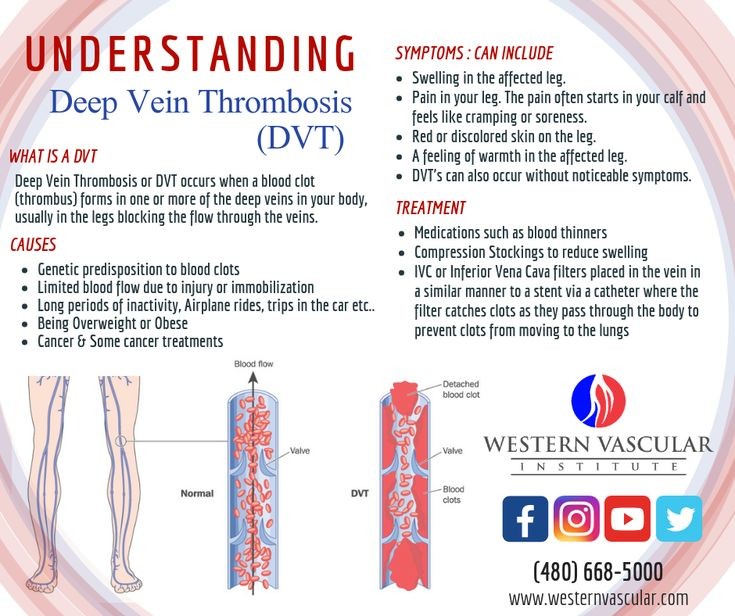
Watch out for these symptoms:
- Problems with your vision or speech
- A seizure
- General feeling of weakness
Blood clots can happen in the veins that drain blood from your intestines. They can be caused by conditions like diverticulitis or liver disease, or even by birth control pills.
How will you know if this is going on? Check with your doctor if you have problems like these:
- Nausea or vomiting
- Severe pain in your belly, which may be worse after you eat
- Diarrhea
- Bloody stools
- A bloated feeling
A blood clot in your kidneys can keep them from removing waste from your body. That can cause high blood pressure or even kidney failure.
This is dangerous, so look out for these symptoms:
- Pain in the side of your belly, legs, or thighs
- Blood in your urine
- Fever
- Nausea or vomiting
- High blood pressure
- Sudden severe leg swelling
- Trouble breathing
Top Picks
Symptoms in Legs, Lungs, and More
Written by WebMD Editorial Contributors
- Arms, Legs
- Heart
- Lungs
- Brain
- Belly
- Kidneys
- More
Ever get a paper cut or nick yourself while shaving? When that happens, a blood clot saves the day. It quickly stops the bleeding, and when it’s done its job, it usually breaks up. Sometimes, though, things can go wrong.
It quickly stops the bleeding, and when it’s done its job, it usually breaks up. Sometimes, though, things can go wrong.
When blood clots don’t fall apart, they can be dangerous and lead to serious medical conditions. You can get them in blood vessels in just about any part of your body. They’re most likely to affect a leg, especially if you sit for long periods of time.
You might get a clot in your arteries, which carry oxygen in your blood from your heart to all the cells of your body. The result can be really serious. It can keep oxygen from getting to your heart, lungs, or brain, and cause a life-threatening emergency, like a heart attack or stroke.
You could also get a clot in the veins that carry blood back to your heart. When that happens, symptoms usually come on more gradually, but can still mean trouble.
If you learn the warning signs, you’re more likely to get quick medical help that can make a huge difference in keeping you out of the danger zone. But it’s important to know that in some cases, clots can happen with few symptoms or none at all. .
.
See More: Dos and Don’ts of a Blood Clot
When a blood clot forms in one of the deep veins in your arm or leg, way beneath your skin’s surface, it could be something called a deep vein thrombosis (DVT). That’s dangerous because the clot could travel to your heart or lungs.
You’re more likely to get a DVT if you haven’t moved around for a long time, say after surgery or during a long plane trip. Get medical help right away if you notice any of these symptoms:
- Swelling. This can happen in the exact spot where the blood clot forms, or your entire leg or arm could puff up.
- Change in color. You might notice that your arm or leg takes on a red or blue tinge, or gets itchy.
- Pain. As the clot gets worse, you may hurt or get sore. The feeling can range from a dull ache to intense pain. You may notice the pain throbs in your leg, belly, or even your arm.
- Warm skin. The skin around painful areas or in the arm or leg with the DVT may feel warmer than other skin.

- Trouble breathing. If this happens, it could mean that the clot has moved from your arm or leg to your lungs. You may also get a bad cough, and might even cough up blood. You may get pain in your chest or feel dizzy. Call 911 to get medical help right away.
- Lower leg cramp. If the clot is in your calf or lower leg, you may feel like you have a cramp or charley horse.
- Pitting edema. DVT can cause fluid buildup (edema) in the arms or legs. It typically happens quite quickly with DVT. When you press on the swollen area, it can cause a dimple or “pit” (pitting) that remains for a few seconds.
- Swollen, painful veins. The pain may increase with touch.
A blood clot that forms in or around your ticker may cause a heart attack. Watch out for symptoms like these:
- Severe pain in your chest and arm
- Sweating
- Trouble breathing
A blood clot in your lung usually starts out in a deep vein in your arm or leg, then breaks off and travels to your lung. When this happens, you get what’s called a pulmonary embolism, an extremely dangerous condition.
When this happens, you get what’s called a pulmonary embolism, an extremely dangerous condition.
Get medical help right away if you:
- Feel short of breath or have problems breathing
- Get pain in your chest
- Start to cough
- Begin to sweat
- Feel dizzy
Blood clots here may be caused by fatty deposits in the walls of the blood vessels that bring blood to your brain. Or sometimes, they may form because of a blow to your head that leads to a concussion.
In other cases, a clot that starts out in a different part of your body, like your chest or neck, might enter your bloodstream and travel to your brain, where it can cause a stroke.
Watch out for these symptoms:
- Problems with your vision or speech
- A seizure
- General feeling of weakness
Blood clots can happen in the veins that drain blood from your intestines. They can be caused by conditions like diverticulitis or liver disease, or even by birth control pills.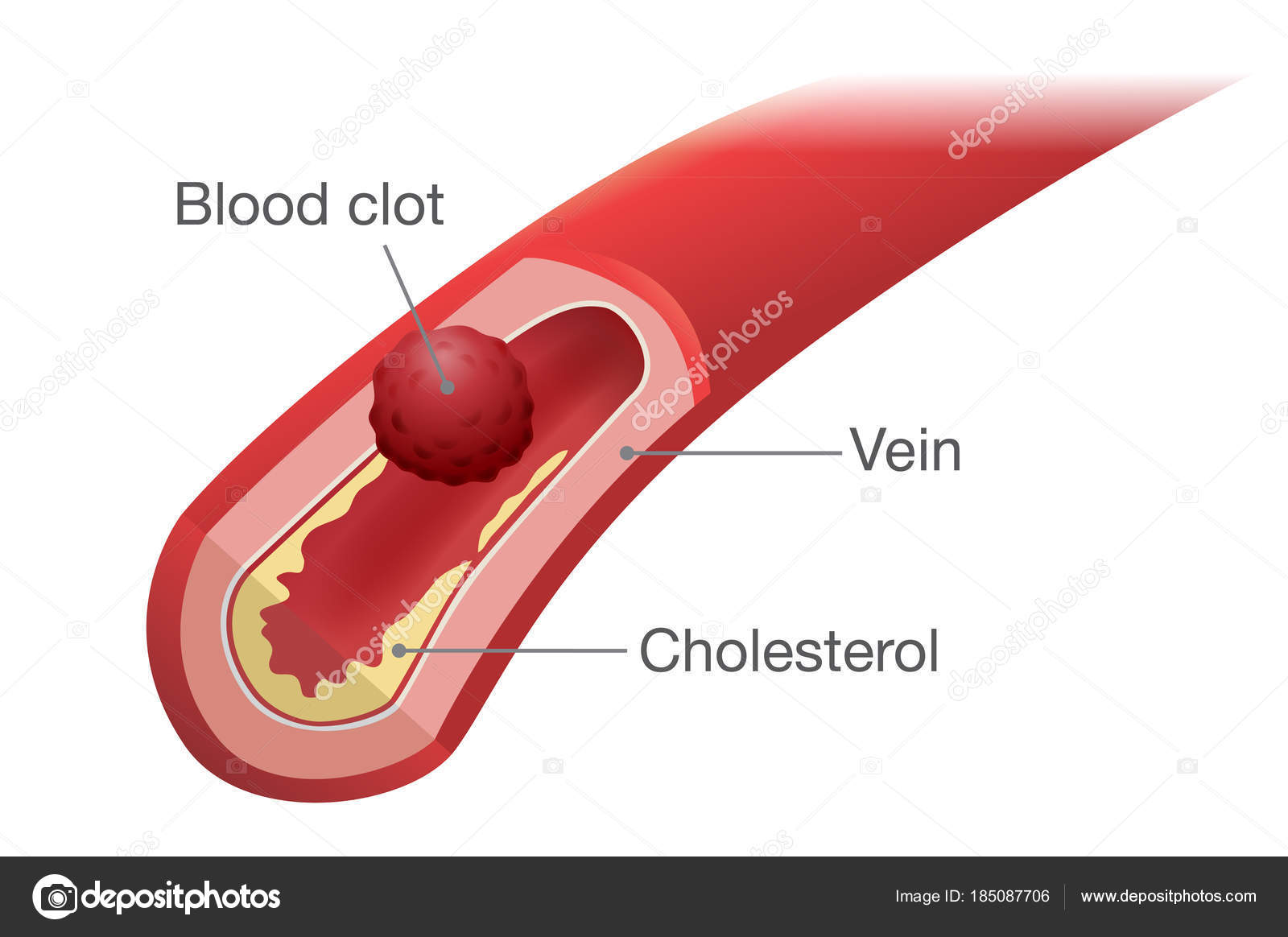
How will you know if this is going on? Check with your doctor if you have problems like these:
- Nausea or vomiting
- Severe pain in your belly, which may be worse after you eat
- Diarrhea
- Bloody stools
- A bloated feeling
A blood clot in your kidneys can keep them from removing waste from your body. That can cause high blood pressure or even kidney failure.
This is dangerous, so look out for these symptoms:
- Pain in the side of your belly, legs, or thighs
- Blood in your urine
- Fever
- Nausea or vomiting
- High blood pressure
- Sudden severe leg swelling
- Trouble breathing
Top Picks
what is it, prevention, symptoms, signs of thrombosis
Thrombosis – complete or partial blockage of the vessel lumen by a parietal or mobile thrombus. A thrombus is a dense blood clot that appears as a result of a change in its fluidity. Normally, thrombus formation is a protective mechanism. Damage to the vascular wall entails a slowdown in blood flow, the accumulation of platelets around the damage. The thrombus literally “darns” the vessel wall.
A thrombus is a dense blood clot that appears as a result of a change in its fluidity. Normally, thrombus formation is a protective mechanism. Damage to the vascular wall entails a slowdown in blood flow, the accumulation of platelets around the damage. The thrombus literally “darns” the vessel wall.
Classical causes of thrombus formation are described by Vihrov’s triad: damage to the vascular wall, slowing of blood flow, and changes in blood properties [3]. Some thrombi (they are called emboli) are able to move to narrower sections of the vessel, which clog completely or partially. Every year, about 25 million people die from thrombosis, and even more face trophic disorders caused by blood clots [3].
Types of vascular thrombosis
Thrombosis of the lower extremities is the most common, but the greatest danger is pulmonary embolism – PE – and disseminated intravascular coagulation syndrome – DIC.
Arterial thrombosis develops when its lumen is blocked by a thrombus or embolus.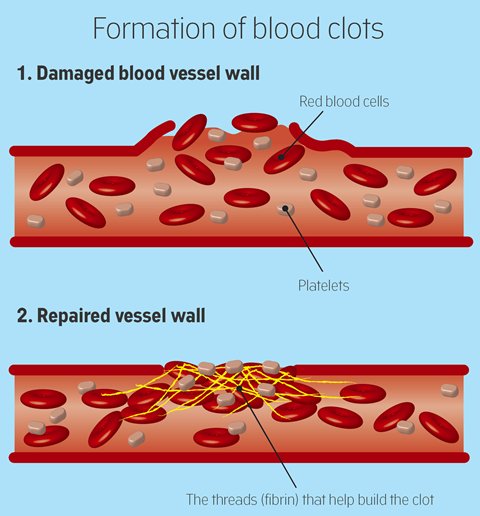 Clinical signs are determined by the site where such a blockage occurred, an organ or tissue that is poorly supplied with blood or not supplied with it at all. If the blockage with impaired patency of the vessel occurs slowly, “spare”, collateral, vessels open, which alleviates the clinical symptoms of arterial thrombosis [3]. Arterial thrombosis occurs more often in middle-aged and elderly men [7].
Clinical signs are determined by the site where such a blockage occurred, an organ or tissue that is poorly supplied with blood or not supplied with it at all. If the blockage with impaired patency of the vessel occurs slowly, “spare”, collateral, vessels open, which alleviates the clinical symptoms of arterial thrombosis [3]. Arterial thrombosis occurs more often in middle-aged and elderly men [7].
Venous thrombosis varies depending on the location of the lesion for deep or superficial vein thrombosis and pulmonary embolism. Among all cardiovascular pathologies, venous thrombosis ranks third in frequency of occurrence, second only to coronary artery disease and atherosclerosis. The third place in the structure of causes of death is PE. Starting from the age of 40, the risk of developing venous thrombosis doubles every 10 years [5].
Two types of damage to the veins of the lower extremities are described: phlebothrombosis (primary thrombosis, the thrombus is not firmly fixed) and thrombophlebitis (secondary thrombosis against the background of inflammation of the vessel wall, the thrombus is firmly fixed) [6]. Thrombophlebitis is more often associated with superficial vein thrombosis [2]. The larger the vein affected by thrombosis, the brighter its clinical manifestations. The surrounding tissues are compressed by stasis of blood, since the blood stays at the site of occlusion, but does not move towards the heart. Venous clots tend to break off and spread with the blood stream (thromboemboli). When they enter the vital organs, life-threatening conditions develop [3].
Thrombophlebitis is more often associated with superficial vein thrombosis [2]. The larger the vein affected by thrombosis, the brighter its clinical manifestations. The surrounding tissues are compressed by stasis of blood, since the blood stays at the site of occlusion, but does not move towards the heart. Venous clots tend to break off and spread with the blood stream (thromboemboli). When they enter the vital organs, life-threatening conditions develop [3].
Causes of thrombosis
Common causes of thrombosis formation are described above. Arterial thrombosis begins with the formation of atheroma – an atherosclerotic plaque. Platelets accumulate around it. The plaque itself may be harmless, but when its surface is injured, dense blood clots form at the site of the tear. This process is called “atherothrombosis” [3, 7]. Venous thromboses are formed when the rheological properties of blood change or as a reaction to inflammation of the vascular wall [5].
Thrombosis risk factors
Internal:
- arterial hypertension [7];
- pregnancy, childbirth, postpartum period [3];
- biochemical changes in blood [2,3,5,7];
- vasculitis [2];
- age over 40 [5];
- congenital thrombophilia, thrombosis, varicose veins of the lower extremities [3,5];
- congestive heart failure [5, 6];
- malignant neoplasms, radiotherapy and chemotherapy [3];
- strokes [3, 6];
- myeloproliferation [2, 5, 7];
- nephrotic syndrome and renal failure [5, 6, 7];
- obesity (BMI over 30) [3];
- myocardial infarction [6];
- diabetes mellitus [6, 7];
- systemic lupus erythematosus [2];
- chronic pulmonary diseases [3];
- enterocolitis [5].

External:
- heroin addiction [2];
- hormone therapy [3,5];
- dehydration with vomiting, diarrhea, increased sweating, direct lack of fluid [6];
- immobilization [3];
- trips by plane, bus or seated car [3];
- infectious diseases, including COVID-19 [1, 3, 5, 9];
- catheterization of central and peripheral veins [2, 5];
- smoking [6, 7];
- sedentary lifestyle [3];
- operations [3];
- fractures of large bones, other injuries [3];
- taking oral contraceptives [5];
- taking Diazepam, Amiodarone, Vancomycin [2];
- sclerotherapy and thermal ablation [2];
- condition after joint replacement [3];
- holding an uncomfortable posture [3].
Thrombosis Clinic
Symptoms of thrombosis may be general, regardless of location, or specific. Common symptoms include pain on movement and at rest, limited mobility, and reduced function of the affected organ or tissue.
Symptoms of impaired arterial patency (acute thrombosis, or gradual impairment of vessel patency):
- BP asymmetry when measured on both arms [7];
- pale skin turning into cyanosis [7];
- pain at rest at night [7];
- pain on movement in the thigh, buttock, leg, foot, shooting or aching [7];
- sleep disorders [7];
- numbness, cold extremity [7];
- absence of peripheral pulsation [7];
- necrosis (necrosis) of affected tissues, trophic ulcers, gangrene [7];
- intermittent claudication [7].
Symptoms of venous thrombosis:
- pain [6];
- edema, soft and asymmetric [6];
- blue skin (skin cyanosis) [6];
- fever of the skin of the extremities [6];
- increased sensitivity and thickening in the projection of the superficial veins [2];
- post-inflammatory hyperpigmentation [2];
- dilated saphenous veins [6];
- erythema [2].

Sometimes the only symptom of venous thrombosis is PE [6].
Thrombosis diagnostics
Primary diagnosis is based on a detailed history and anthropometry (calf or thigh circumference). Wells scales are used for the diagnosis of acute thrombosis and the diagnosis of PE [8,9].
Diagnostic imaging includes vein compression or duplex scanning, vein compression Doppler, impedance plethysmography, pulmonoangiography, radiopaque or MRI phlebography [6,9], CT and MRI angiography [7,9].
For the diagnosis of arterial thrombosis, physical tests (6-minute walk test, treadmill test), determination of pulsation of superficial arteries (dorsal arteries), duplex scanning of arteries of the extremities, angiography (X-ray of a vessel filled with a radiopaque substance) and measurement of transcutaneous tension are used oxygen [7].
Thrombosis tests
A significant role in the timely diagnosis of thrombosis is played by laboratory parameters.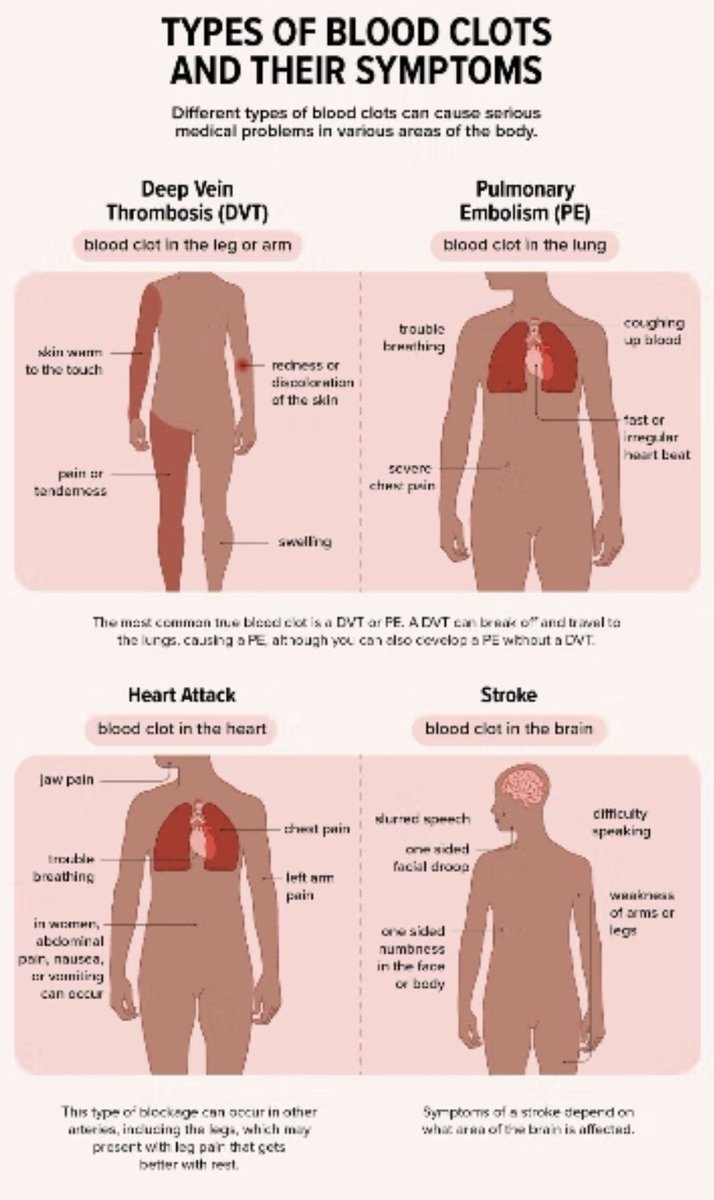 Thus, guidelines for the management of patients with a new coronavirus infection provide for the stratification of the risk of coagulopathy in patients with COVID-19based on simple laboratory tests: D-dimer, prothrombin time, platelet count, fibrinogen level [1,9].
Thus, guidelines for the management of patients with a new coronavirus infection provide for the stratification of the risk of coagulopathy in patients with COVID-19based on simple laboratory tests: D-dimer, prothrombin time, platelet count, fibrinogen level [1,9].
CBC detects inflammation. It also determines the level of platelets, that is, the very substrate of thrombosis.
An increased level of C-reactive protein also indicates the level of inflammation in the blood and the risk of thrombosis.
Biochemical analysis primarily shows the level of blood glucose. It can be used to judge the presence of diabetes, one of the most serious risk factors for thrombosis.
Also, biochemical analysis is able to determine the level of protein C, which also characterizes the severity of the risk of thrombosis.
Elevated blood levels of homocysteine are also a proven risk of thrombosis leading to miscarriage and cardiovascular events (heart attacks and strokes).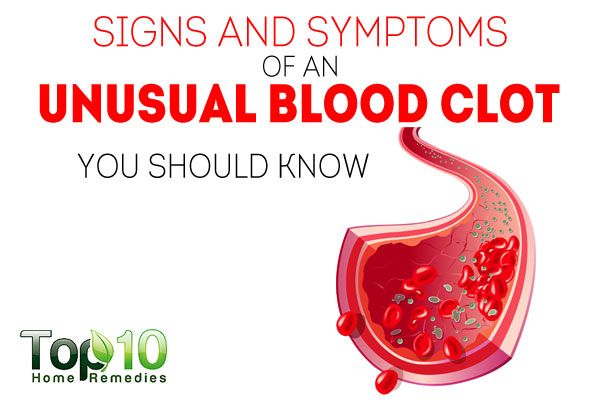
D-dimer is a laboratory marker of fibrin formation [8]. It also indicates the presence of inflammation, like C-reactive protein. D-dimer levels are a benchmark for COVID-19and its complications, including those associated with thrombosis.
It is possible to take tests according to the complex program “Thrombosis”, which includes the determination of the levels of Antithrombin-III, D-dimer and genetic factors of cardiac diseases and the level of platelets. This program allows you to determine the fact of an accomplished thrombosis somewhere in the body, as well as determine the genetic predisposition to it. Such a program, as well as other analyzes, is offered by the CITILAB network of clinics.
Additional determination of the level of homocysteine, C-reactive protein will help determine the biochemical risk of thrombosis.
Treatment and prevention of thrombosis
Treatment of thrombosis includes anticoagulant and antiplatelet therapy, thrombolytic therapy, installation of an inferior vena cava cava filter, and surgical removal of a thrombus [5]. It is necessary to keep in mind the complications of anticoagulant therapy: major bleeding, heparin-induced thrombocytopenia and warfarin-induced skin necrosis [5]. NSAIDs are used to reduce the risk of continued thrombus formation [2]. For the purpose of secondary prevention, small doses of heparin are prescribed.
It is necessary to keep in mind the complications of anticoagulant therapy: major bleeding, heparin-induced thrombocytopenia and warfarin-induced skin necrosis [5]. NSAIDs are used to reduce the risk of continued thrombus formation [2]. For the purpose of secondary prevention, small doses of heparin are prescribed.
Non-drug methods of treatment are also prescribed – elastic bandaging, compression stockings, local hypothermia and exercise therapy [2, 4].
Thrombosis prophylaxis includes a number of interventions used in situations of increased risk of thrombosis.
Primary prevention of atherothrombosis:
- systematic physical activity in the form of walking or morning exercises;
- BP control, maintenance of working blood pressure below 140/90 mmHg;
- blood sugar control (less than 6 mmol/l), early detection and treatment of diabetes mellitus;
- weight loss, body mass index less than 25 kg per m2;
- restricted cholesterol and high-density fat diet (total cholesterol less than 5 mmol/l), fruits and vegetables;
- smoking cessation [3,7].

Primary prevention of venous thrombosis:
- compression stockings;
- bandaging with elastic bandages;
- drink plenty of fluids, especially after surgery;
- regular exercise, walking, especially when traveling;
- prohibition of alcohol and sleeping pills in large doses;
- prohibition of the use of squeezing shoes and clothing [2,5,6].
Sometimes, for periods of high risk, anticoagulants are prescribed a few days before the flight. Aspirin to take in such cases does not make sense [5].
References
- Agreed position of experts of the Eurasian Association of Therapists on some new mechanisms of COVID-19 pathogenesis: focus on hemostasis, blood transfusion issues and the blood gas transport system / G.P. Arutyunov, N.A. Koziolova, E.I. Tarlovskaya, A.G. Arutyunov, N.Yu Grigorieva and others// Cardiology. 2020;60(6). DOI: 10.18087/cardio.2020.5.n1132.
- Thrombophlebitis (thrombosis of superficial veins): modern standards for diagnosis and treatment / V.
 Yu. Bogachev, B.V. Boldin, O.V. Jenina, V.N. Lobanov // Hospital-replacing technologies: Ambulatory surgery. 2016.- 3-4 (63-64) – P.16-23.
Yu. Bogachev, B.V. Boldin, O.V. Jenina, V.N. Lobanov // Hospital-replacing technologies: Ambulatory surgery. 2016.- 3-4 (63-64) – P.16-23. - Modern problems of thrombosis of arteries and veins / I.N. Bokarev, L.V. Popova / / Practical Medicine, 2014. – No. 6 (82) -C13-17.
- Treatment of thrombophlebitis. Current recommendations and clinical practice / P.F. Kravtsov, K.V. Mazaishvili, S.M. Markin, H.M. Kurginyan // Thrombosis, hemostasis and rheology, 2020 No. 2 – C 68-72.
- Venous thrombosis: modern treatment / P.S. Laguta // Atherothrombosis, 2015 – No. 2- P. 7-16.
- Deep vein thrombosis of the lower extremities / A.K. Lebedev, O.Yu. Kuznetsova // Russian family doctor, 2015.
- National guidelines for the diagnosis and treatment of diseases of the arteries of the lower extremities, Association of Cardiovascular Surgeons of Russia, Russian Society of Angiologists and Vascular Surgeons, Russian Society of Surgeons, Russian Society of Cardiology, Russian Association of Endocrinologists, M, 2019.

- Diagnosis and pharmacotherapy of acute venous thrombosis / N.V. Sturov, G.N. –S.19-22.
- Management of venous thromboembolism during the COVID-19 pandemic// V.Ya. Khryshchanovich // News of Surgery, 2020.- vol.
how to tell if you have blood clots
The first and hidden signs that dangerous blood clots are forming in your vessels.
Tags:
Question answer
Health
Popular
Getty Images
A blood clot is a blood clot that has turned from a liquid to a gel or semi-solid state. Blood clotting is a necessary process that can prevent you from losing too much blood when you get hurt or cut. When a clot forms inside one of your veins, it doesn’t always dissolve on its own. This can be a very life-threatening situation.
Contents of the article
An immobile blood clot will not usually harm you, but it is likely to move and become dangerous. If a clot breaks off and travels through the veins to the heart and lungs, it can get stuck and obstruct blood flow. This condition requires urgent medical attention.
This condition requires urgent medical attention.
If you think you may have a blood clot, contact your doctor immediately. The specialist will be able to review your symptoms and medical history and recommend what steps to take.
Types of blood clots
Your circulatory system is made up of vessels called veins and arteries that carry blood throughout your body. Blood clots can form in veins or arteries. An arterial clot causes symptoms immediately and requires emergency care. Symptoms of an arterial clot include severe pain, paralysis of parts of the body, or both. It can lead to a heart attack or stroke. A blood clot that forms in a vein may build up more slowly over time, but it can still be life-threatening. The most serious type of venous clot is deep vein thrombosis.
ADVERTISING – CONTINUED BELOW
Deep vein thrombosis (DVT) is a condition where a clot forms in one of the main veins deep inside your body. It most often occurs in one of the lower extremities, but it can also occur in the arms, pelvis, lungs, or even the brain. Without consulting a doctor, it is impossible to confirm its presence. But if you know the most common symptoms and risk factors, you can know when to see a specialist.
It most often occurs in one of the lower extremities, but it can also occur in the arms, pelvis, lungs, or even the brain. Without consulting a doctor, it is impossible to confirm its presence. But if you know the most common symptoms and risk factors, you can know when to see a specialist.
Possible blood clot without obvious symptoms. When the symptoms do appear, some of them coincide with the symptoms of other diseases. Below we have given the first signs and symptoms of a blood clot in the leg or arm, heart, abdomen, brain and lungs.
Blood clot in the leg or arm
Most often, a blood clot forms in the lower leg. A blood clot in a leg or arm may present with various symptoms, including:
- swelling
- pain
- weakness
- warm sensation
- reddish discoloration
Symptoms will depend on the size of the clot. This is why there may be no symptoms, or you may only have a slight swelling of the calf without much pain. If the clot is large, the entire leg may swell with severe pain. Blood clots on both legs or arms are rare. Your chances of having a blood clot are increased if your symptoms only affect one leg or one arm.
If the clot is large, the entire leg may swell with severe pain. Blood clots on both legs or arms are rare. Your chances of having a blood clot are increased if your symptoms only affect one leg or one arm.
Blood clot in the heart or heart attack
Blood clot in the heart causing a heart attack. The heart is a less common place for a blood clot to form, but it can still happen. A blood clot in the heart can cause pain or a feeling of heaviness in the chest. Other potential symptoms are dizziness and shortness of breath.
( See also: How to provide first aid for a fracture)
Blood clot in the abdominal cavity
Severe abdominal pain and swelling may be symptoms of a blood clot somewhere in the abdomen. They may also look like symptoms of food poisoning.
Blood clot in the brain or stroke
Blood clot in the brain is also known as a stroke. A blood clot in the brain can cause a sudden and severe headache, as well as some other symptoms, including sudden difficulty speaking or seeing.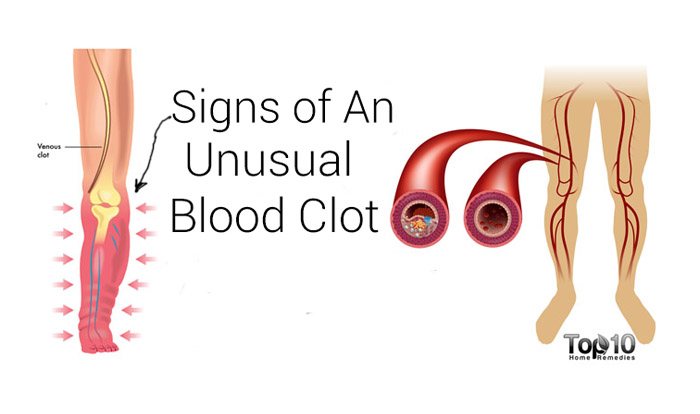
Blood clot in the lungs or pulmonary embolism
When a blood clot travels to the lungs, it is called pulmonary embolism (PE). Symptoms of PE may include:
- sudden shortness of breath not caused by exercise
- chest pain
- palpitations
- trouble breathing
- hemoptysis
9 0002 ( Read also: What to do if a person faints)
What are the risk factors?
Certain risk factors increase the chances of a blood clot. A recent hospital stay, especially a long one or one associated with major surgery, increases the risk of thrombosis.
General factors that may put you at moderate risk of a blood clot include:
- age, especially if you are over 65
- long trips, especially those that require you to sit for more than four hours at a time,
- bed regime or prolonged sedentary lifestyle
- obesity
- family history of blood clots
- smoking
- cancer
When to see a doctor?
Diagnosing a blood clot based on symptoms alone is very difficult.

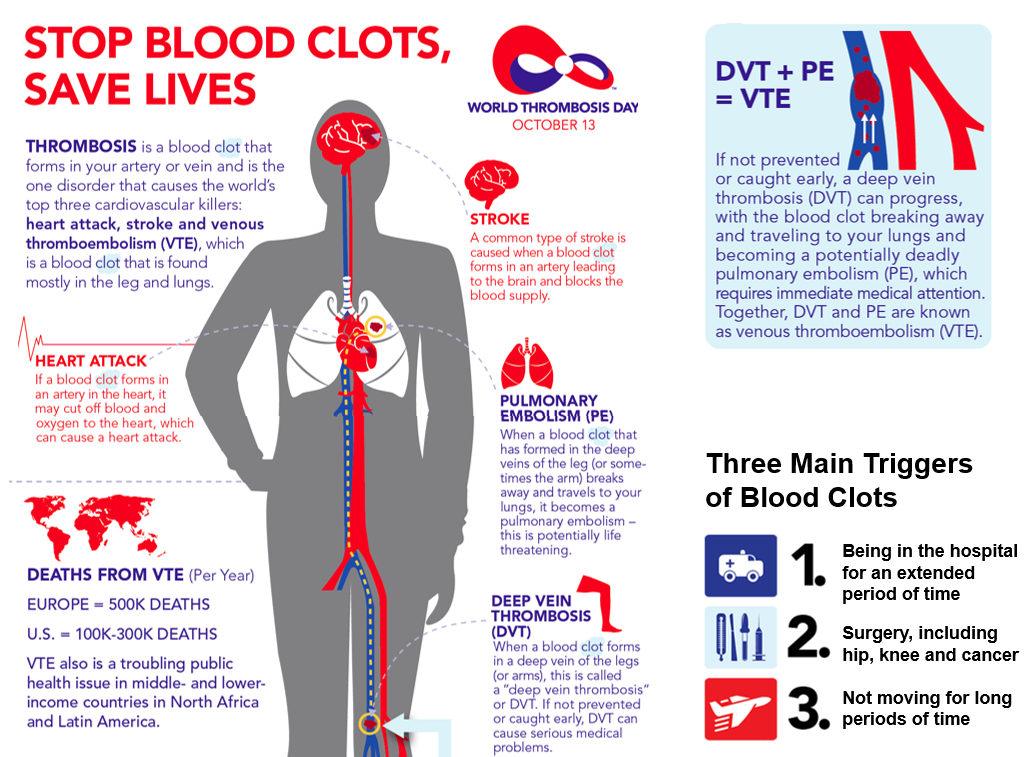 You might notice that your arm or leg takes on a red or blue tinge, or gets itchy.
You might notice that your arm or leg takes on a red or blue tinge, or gets itchy.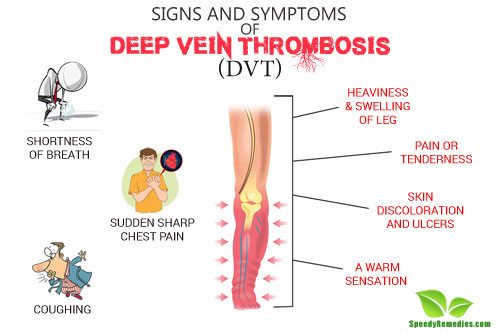


/how-to-determine-whether-you-are-having-a-miscarriage-2371261_FINAL-a6bebec7b81342209a8e06de20c145ed.png)

/subchorionic-hematoma-2371262-FINAL-f6087842ac05492db024d87f87700082.png) Yu. Bogachev, B.V. Boldin, O.V. Jenina, V.N. Lobanov // Hospital-replacing technologies: Ambulatory surgery. 2016.- 3-4 (63-64) – P.16-23.
Yu. Bogachev, B.V. Boldin, O.V. Jenina, V.N. Lobanov // Hospital-replacing technologies: Ambulatory surgery. 2016.- 3-4 (63-64) – P.16-23.